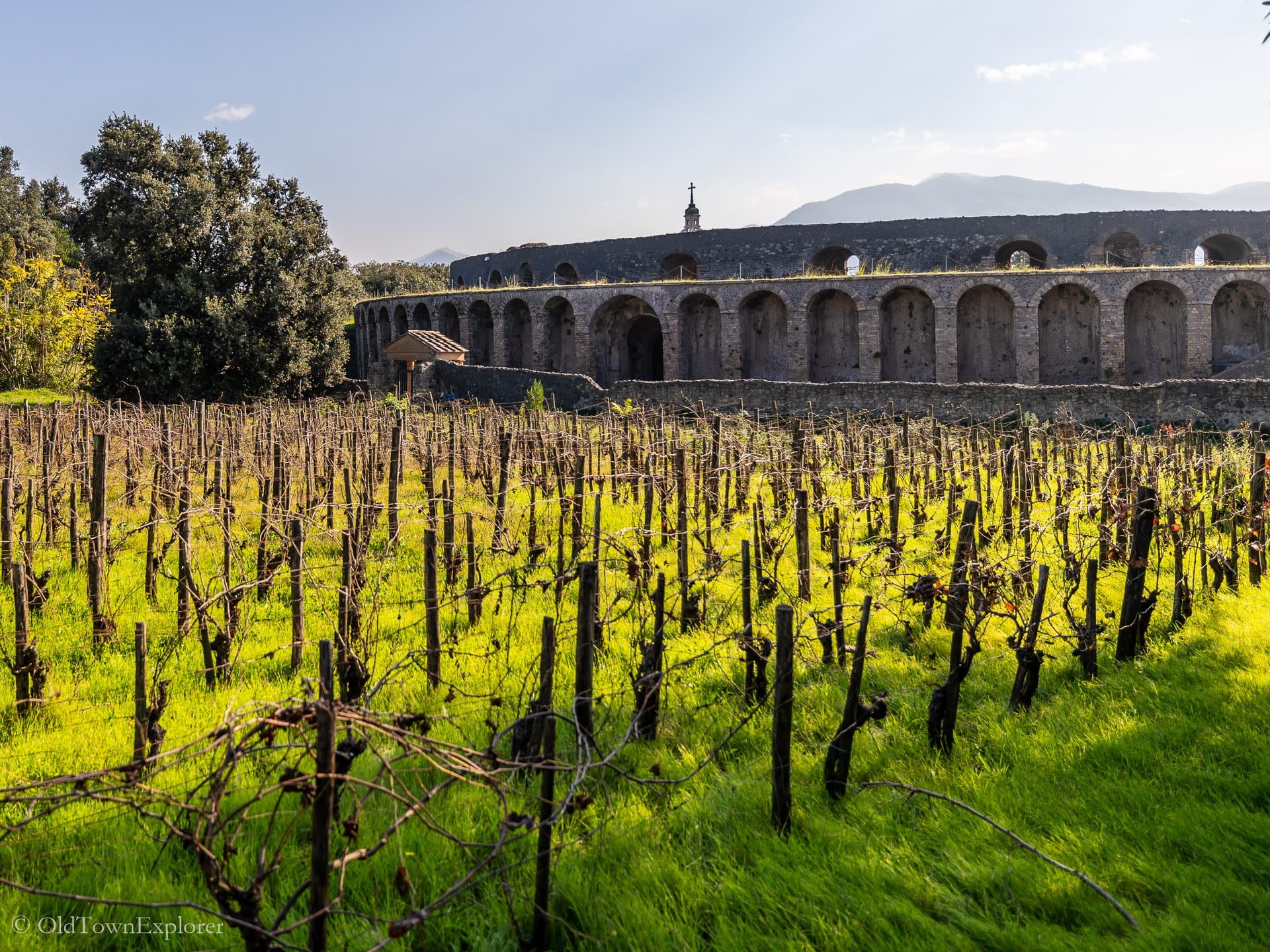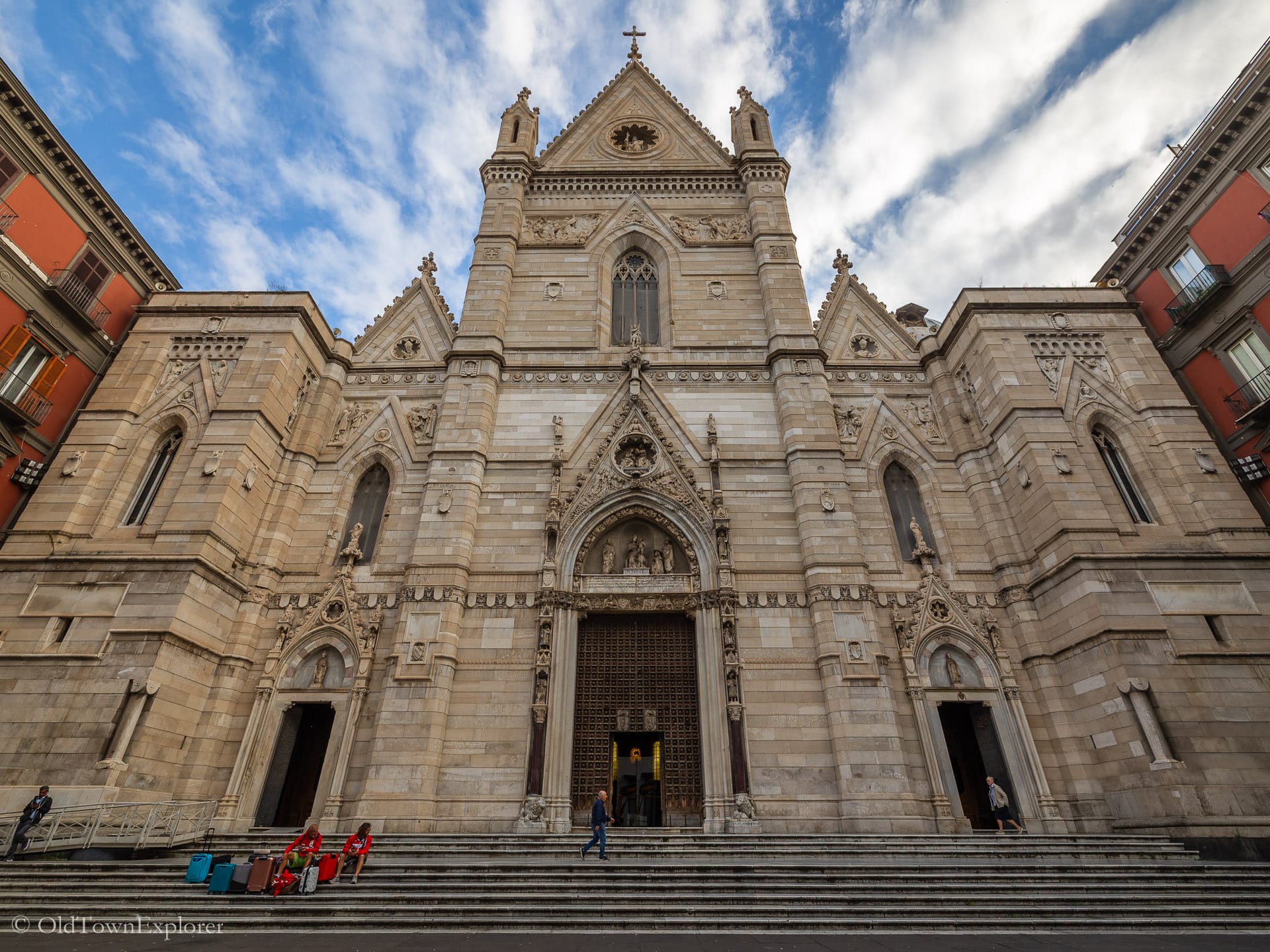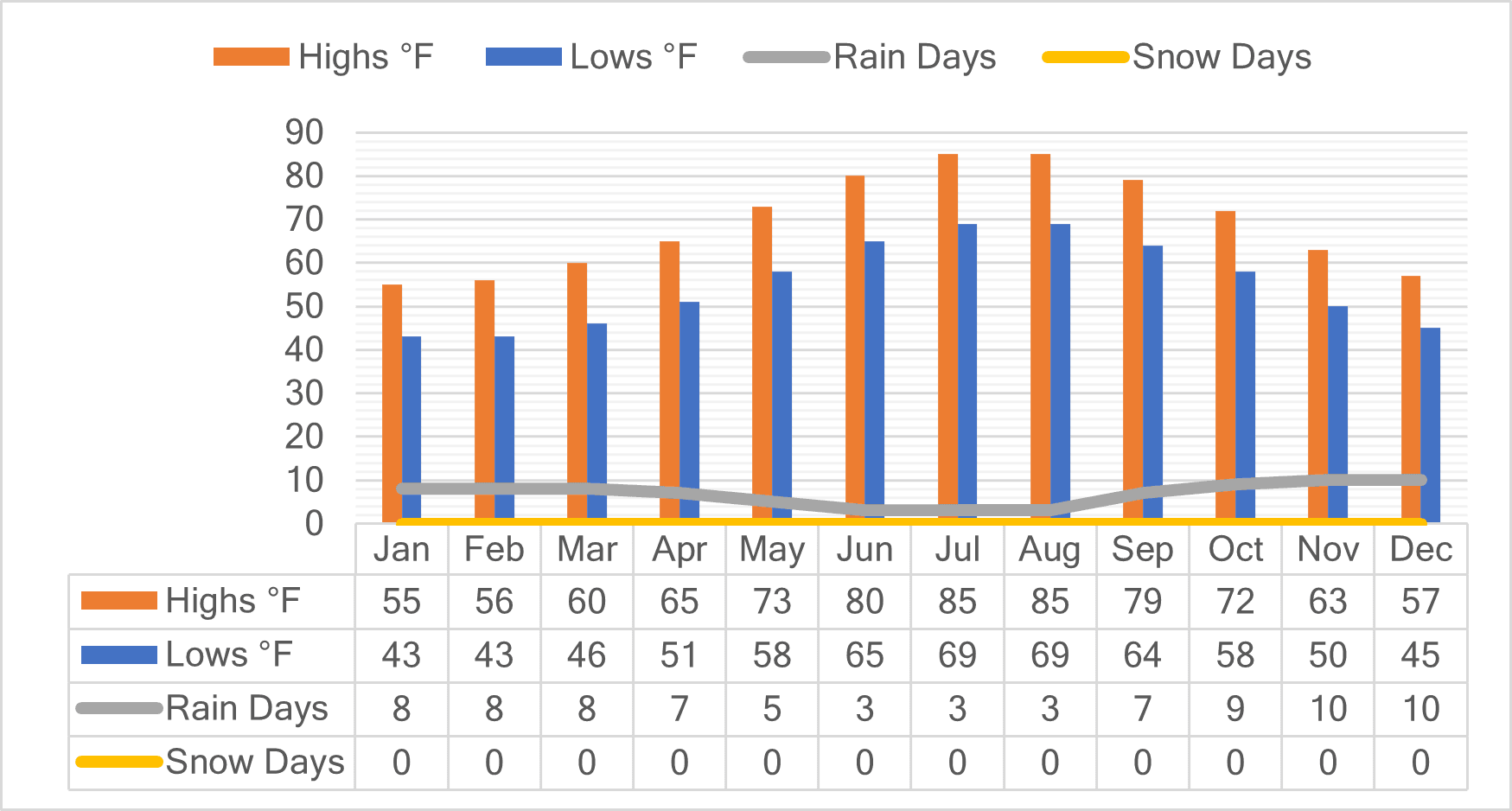Naples
Food | Wine | ArchitectureExplore Naples: Food, Wine & Architecture
Naples, Italy is one of Europe’s most vibrant and character-rich cities—a place where ancient history, bold flavors, and lived-in beauty converge. The city’s historic center is a dense, chaotic, and captivating maze of Baroque facades, underground ruins, and artisan shops.
For travelers drawn to food, wine, and architecture, it offers an unforgettable blend of sensory experiences: from world-famous pizza and street markets to centuries-old churches and royal palaces.
We spent the entire month of November exploring Naples’s traditional food, local wine, and historic architecture. We’ve compiled a summary of the information we collected so you can start enjoying Naples as soon as you arrive!
This page contains affiliate links. We may earn a small commission at no extra cost to you.
Naples Food
Naples is a culinary powerhouse where centuries-old traditions and bold Mediterranean flavors meet in every bite. The birthplace of pizza—and home to iconic dishes like spaghetti alle vongole, sfogliatella, and cuoppo di mare—Naples offers a rich tapestry of local specialties rooted in simplicity and seasonality.
Travelers drawn to authentic food culture will find no shortage of inspiration in the city’s vibrant pizzerie, family-run trattorias, and buzzing street food stalls.

Naples Wine
While Naples is better known for its food, the city is also a gateway to some of southern Italy’s most historic and distinctive wine regions.
Nestled near the volcanic soils of Mount Vesuvius, Naples offers easy access to celebrated appellations like Lacryma Christi del Vesuvio, Falanghina, Greco di Tufo, and Aglianico.
Wine lovers who wish to stay in Naples will find a growing scene of enotecas, wine bars, and specialty shops where local bottles take center stage.

Naples Architecture
Naples is a city layered in time, and nowhere is this more vivid than in its sprawling Old Town—the largest historic center in Europe and a UNESCO World Heritage Site.
Winding alleys, sun-drenched piazzas, and faded Baroque facades reveal a stunning architectural heritage shaped by Greek, Roman, Gothic, Renaissance, and Spanish influences.
From the subterranean ruins of Napoli Sotterranea to the grandeur of Spaccanapoli, Gesù Nuovo, and the lavish Royal Palace, Naples offers a visual feast for travelers fascinated by history and architecture.

Where Is Naples Located?
Naples is located in southern Italy on the western coast, overlooking the Bay of Naples along the Tyrrhenian Sea. The city sits in the shadow of Mount Vesuvius, one of Europe’s most famous volcanoes, and is near the Sorrentine Peninsula and Amalfi Coast.
What Is The Best Time To Visit Naples?
The best month to visit Naples depends on what you’re looking for. Do you want the best weather, fewer crowds, or the best value? Following are our suggestions for each.
Weather
The best weather is a personal preference. We find the best weather for exploring a city is around 55° F and sunny. The weather in Naples can be very hot in July and August, so plan accordingly if you’re visiting during the summer.
Below is a chart showing the average high and low temperatures for each month so you can decide what is best for you.

Shoulder Season
The shoulder season in Naples falls in spring (April to June) and early autumn (September to October), offering mild weather, thinner crowds, and more affordable prices. It’s an ideal time for sightseeing, outdoor dining, and exploring the city’s historic and coastal attractions without peak-season congestion.
Best Value
November and March are good months to visit Naples for the best value and with fewer crowds. The weather during these months can be cool in the mornings, but, if you dress appropriately, it can be very comfortable for walking all day.
Best Places to Stay in Naples
Hotels in Naples
If you are planning a trip to Naples, there are plenty of excellent places to stay. However, for the best experience, we strongly recommend staying in the Historic Center (Centro Storico). The castle marker on the map below is the heart of the HIstoric Center. We suggest staying as close to it as possible, depending on your budget and preferences.
Here’s a map with hotel and apartment options that can be filtered to meet your needs. Select your travel dates to get specific availability and prices.
Other Things to Know About Naples
Airport
The main airport serving Naples and the surrounding Campania region is Naples International Airport (IATA: NAP), also known as Capodichino Airport.
Located about 7 km northeast of downtown Naples, it is one of southern Italy’s busiest airports, handling over 10 million passengers annually.
The airport offers good connections to the city center by taxi, bus, and shuttle services, with travel times typically around 15–20 minutes.
Train Station
The main train station in Naples is Napoli Centrale, the city’s central rail hub and a key junction for regional, national, and high-speed trains.
Located about 1.5 km north of the Old Town, Napoli Centrale is roughly a 15–20 minute walk or a short metro ride from historic sites like Spaccanapoli.
The station serves Trenitalia’s high-speed Frecciarossa and Italo trains, regional Circumvesuviana lines to Pompeii and Sorrento, and offers seamless connections to local buses and the Naples Metro network.
Time Zone
Naples is in the Central European Time zone (CET, UTC +1). Daylight Saving Time is observed from the last Sunday in March to the last Sunday in October, during which the city switches to Central European Summer Time (CEST, UTC +2).
Currency
The official currency in Naples is the Euro (€), used throughout Italy and most of the European Union.
Language
Italian is the official language spoken in Naples, with Neapolitan dialect commonly heard in everyday conversation. English is widely understood in tourist areas, hotels, and restaurants.
Visa
Citizens from the United States, United Kingdom, Canada, and Australia do not require a visa to visit Italy for stays of 90 days or less within a 180-day period. This applies to tourism, business, family visits, and short-term studies.
However, starting in 2026, travelers from these countries will need to obtain an ETIAS (European Travel Information and Authorization System) authorization before entering Italy. The ETIAS is an electronic travel authorization, not a visa, and is valid for three years or until passport expiration. It costs €7 and is processed online.
For more information on visa-free travel in Italy, check out our article on traveling visa-free.
Electricity
Italy uses Type C, F, and L electrical outlets, all of which have two or three round pins. The standard supply voltage is 230V with a frequency of 50Hz.
Travelers from countries like the United States, Canada, and Japan will need a plug adapter and possibly a voltage converter for some devices. For convenience, using a travel power strip with multiple USB ports and outlets is recommended, so you only need one adapter to connect several devices at once.
SIM Card
Travelers will want a SIM card for Italy. You can get either a local SIM card or an eSIM card.
To get a local SIM card, you have to find a local cellular service provider, often stand in line for assistance, show your passport, and complete some paperwork. The SIM cards work great, but purchasing them is somewhat inconvenient. This option is best if you need more than 5GB of data.
We use eSIMs exclusively because they can be purchased through an app prior to arrival in a new country and activated when you hit a cell tower in the country. We use Airalo eSIMs. They work great, and I recommend them if you plan to use less than 5 GB of data during your stay or if you need internet immediately on arrival.
Car Rental
The fantastic train system in Italy makes rental cars unnecessary for most destinations. However, rental cars are needed to reach smaller towns and explore the countryside. In addition to the major car rental companies found in the United States, Sixt and Europcar are common throughout Europe. For a comparison of rental car offers from large, international brands and smaller regional brands, we recommend Discover Cars.
FAQs About Naples
What is Naples famous for?
Naples is world-famous as the birthplace of pizza, boasting iconic dishes like Margherita and Marinara that attract food lovers from around the globe. Beyond its culinary fame, Naples is renowned for its rich history, vibrant street life, and stunning architecture, including its UNESCO-listed historic center. The city also serves as a gateway to remarkable nearby sites like Mount Vesuvius, Pompeii, and the Amalfi Coast, making it a cultural and natural hotspot in southern Italy.
Is it Naples or Napoli?
Both names are correct: “Napoli” is the Italian name for the city, while “Naples” is its English equivalent. When visiting or reading Italian sources, you’ll see “Napoli,” but English-language travel guides and international contexts typically use “Naples.”
What is the nicest part of Naples, Italy?
The nicest parts of Naples often include the historic Old Town (Centro Storico), known for its lively atmosphere, narrow streets, and stunning churches. The elegant Chiaia district offers upscale shopping and seaside promenades, while Vomero hill provides panoramic views of the city and bay. Each area showcases a different facet of Naples, appealing to a wide range of travelers.
Is Naples worth visiting?
Absolutely. Naples offers an authentic Italian experience filled with vibrant culture, historic landmarks, world-class food, and dramatic coastal scenery. Its unique blend of ancient ruins, baroque architecture, and lively neighborhoods makes it a must-visit destination for travelers interested in history, gastronomy, and Mediterranean life.
What traditional dishes should I try in Naples?
Naples is famous for its authentic Neapolitan pizza, especially Pizza Margherita and Pizza Marinara. Other must-try dishes include sfogliatella (a flaky, ricotta-filled pastry), spaghetti alle vongole (spaghetti with clams), parmigiana di melanzane (eggplant parmesan), and cuoppo, a cone of fried seafood or street snacks. These dishes highlight the city’s emphasis on fresh, local ingredients and simple yet bold flavors.
Where can I find the best wine bars in Naples?
The historic districts like Spaccanapoli and Chiaia are home to numerous cozy enotecas and wine bars offering local Campanian wines such as Lacryma Christi, Falanghina, and Aglianico. Popular spots include Enoteca Belledonne and Vineria San Sebastiano, where travelers can sample regional varieties alongside traditional small plates.
What architectural styles are most common in Naples?
Naples showcases a rich architectural heritage blending Greek and Roman ruins, Gothic churches, Renaissance palaces, and Baroque grandeur. Notable examples include the Gothic Cathedral of Naples, the Renaissance Palazzo Reale, and the Baroque Church of Gesù Nuovo. This diverse mix reflects Naples’ complex history and cultural influences.
Is the historic center of Naples worth visiting?
Yes, the UNESCO-listed historic center is one of Europe’s largest and most atmospheric old towns. Visitors can explore ancient ruins, narrow alleys lined with artisan shops, vibrant piazzas, and stunning churches—all within walking distance. It offers an immersive experience into Naples’ layered history and vibrant street life.
Can I take wine tours near Naples?
Absolutely. The Campania region surrounding Naples features renowned wine-producing areas on the slopes of Mount Vesuvius and the nearby Amalfi Coast. Visitors can book tours to local vineyards specializing in volcanic soil wines, such as Lacryma Christi del Vesuvio, often combined with tastings of regional cuisine and spectacular coastal views.
Naples Blog Posts
No Results Found
The page you requested could not be found. Try refining your search, or use the navigation above to locate the post.
